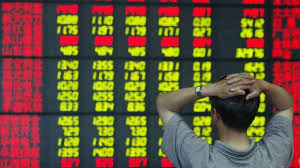
Headline shares of the Mainland China equity market declined on Wednesday, 19 December 2018, as investors risk sentiment dampened after President Xi Jinping offered no specific support measures for the economy in a closely watched speech marking 40 years of market liberalization. The fall in Chinese shares was also driven by weakness across Asian markets, which brewed on the back of growth worries. Among SSE sectors, gains in real estate and utilities shares were offset by losses in healthcare and energy companies. In late afternoon trade, the benchmark Shanghai Composite Index fell 0.7%, or 18.12 points, to 2,558.52, meanwhile the Shenzhen Composite Index, which tracks stocks on China's second exchange, shed 1.04%, or 13.71 points, to 1,298.84. The blue-chip CSI300 index was down 0.91%, or 28.43 points, to 3,100.
Mr Xi called on Tuesday for the unswerving implementation of reforms on Beijing's terms but offered no new specific measures. Some in the market were expecting a big announcement on fiscal policy loosening and a tax cut of as much as 5 trillion yuan in the next five years. Several investors turned their focus on China's central economic work conference this week, where 2019 growth targets and policy goals will be discussed.
With a key speech by Chinese President Xi Jinping offering no new specific measures for the implementation of reforms, investors now await the Federal Reserve's monetary policy guidance for clues about future rate hikes.
Investors were also cautious ahead of the Federal Reserve's interest rate decision Thursday morning. The rate decision will be followed by a press conference with chairman Jerome Powell. The market is pricing in a 70% chance of a US rate hike however economists will pay most attention to the tone of Fed Chair Jerome Powell's statement. Many investors now expect signs of economic turbulence would prompt the Fed to signal a slowdown in the pace of tightening next year.
Shares of healthcare firms declined, as investors reacted to policy headwinds including a pilot volume-based procurement policy.
Energy firms retreated, tracking weakness in oil prices on economic slowdown fears and a supply glut. Crude oil prices bounced back slightly in Asian trade on Wednesday after plunging on worries about rising supplies and weakening global growth, which could weigh on demand. Benchmark U.S. crude gained 12 cents to $46.72 a barrel in electronic trading on the New York Mercantile Exchange. The contract gave up $3.60 to $46.60 on Tuesday. Brent crude, used to price international oils, added 34 cents to $56.60 a barrel. It lost $3.35 to $56.26 a barrel in London.
Property shares climbed, after a Chinese city removed curbs on property sales, raising speculation of policy loosening in the tightly-regulated sector amid an economic slowdown.
CURRENCY NEWS: China yuan was tad stronger against greenback on Wednesday, despite central bank softer mid-point rate, as investors anxiously waited for the outcome of this year's last Federal Reserve policy meeting. Prior to market opening on Wednesday, the People's Bank of China set the midpoint rate at 6.8869 per dollar, 15 pips weaker than the previous fix of 6.8854. In the spot market, the onshore yuan opened at 6.8890 per dollar and was changing hands at 6.8893 at midday, 66 pips firmer than the previous late session close.
0 thoughts on “China Stocks fall as Xi offers no new measures”